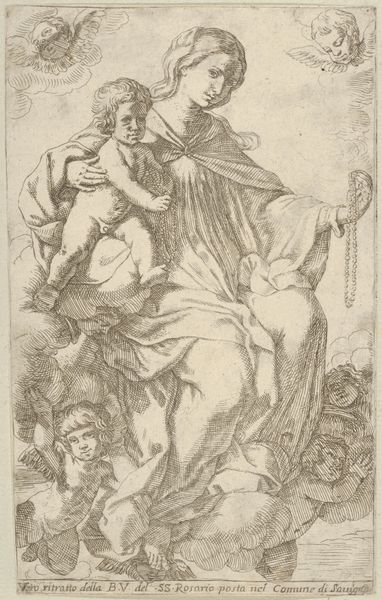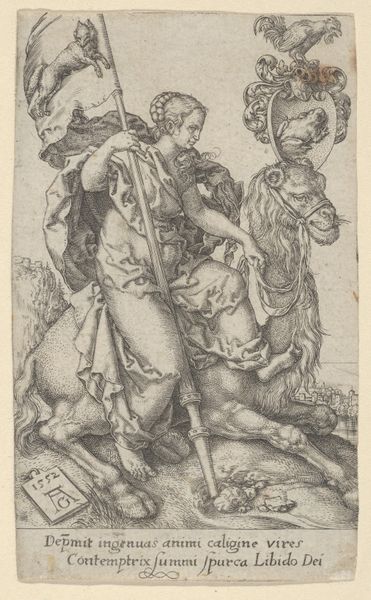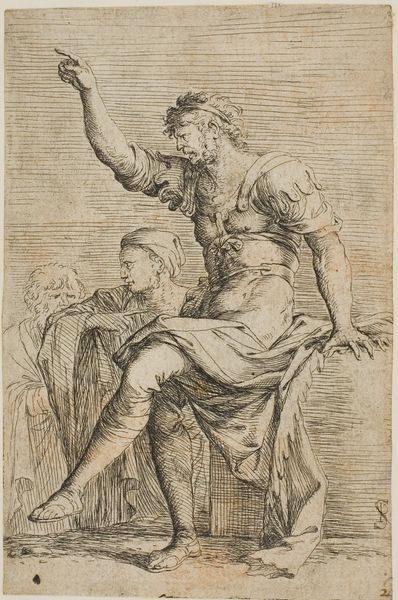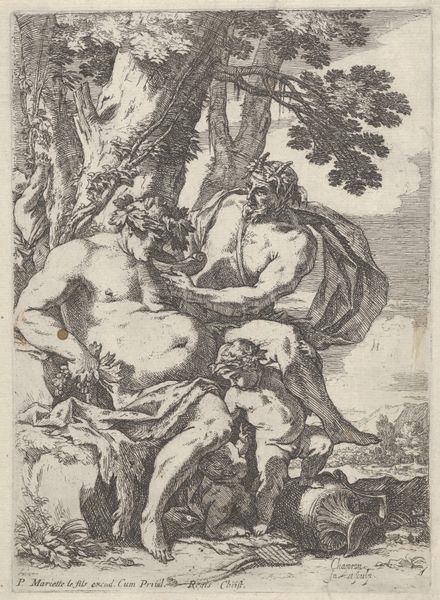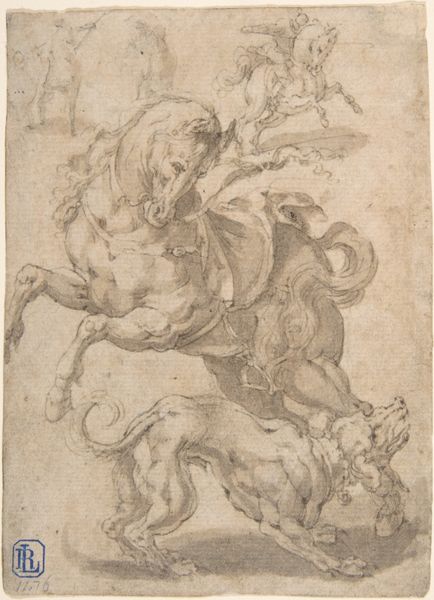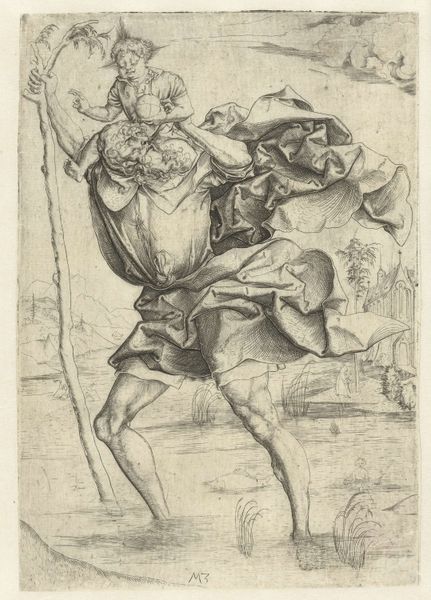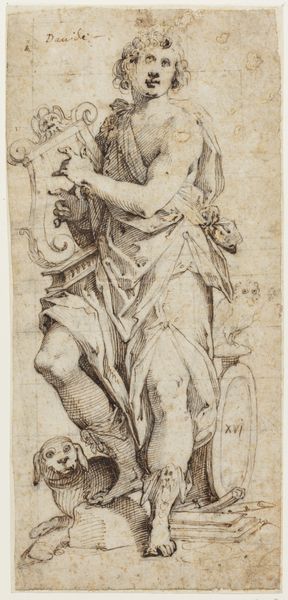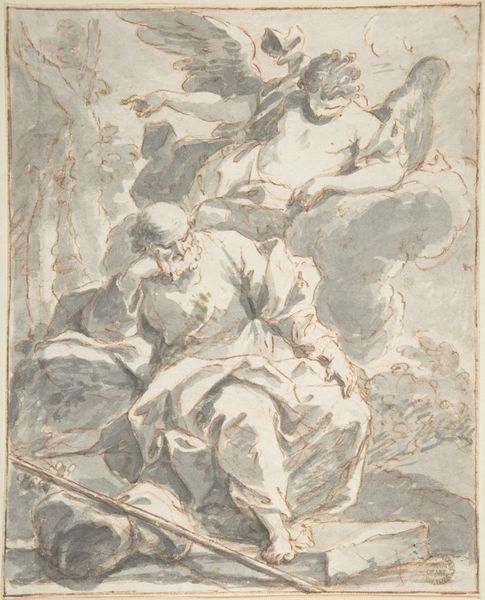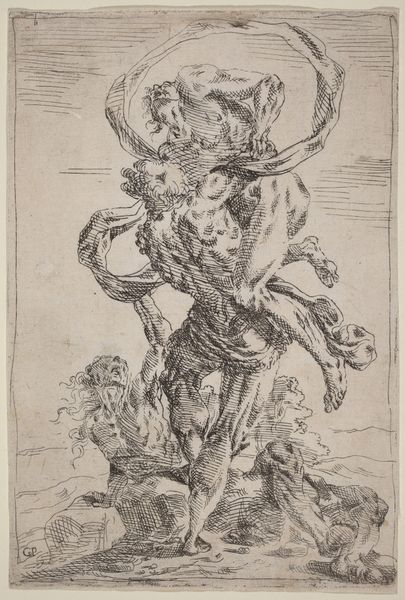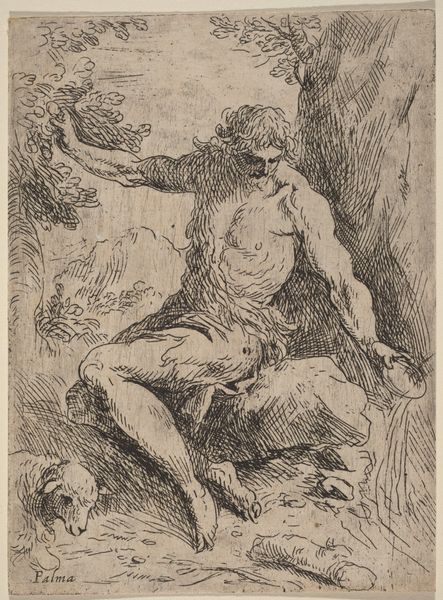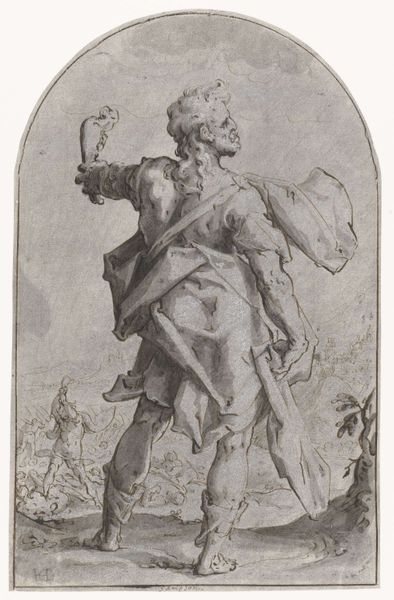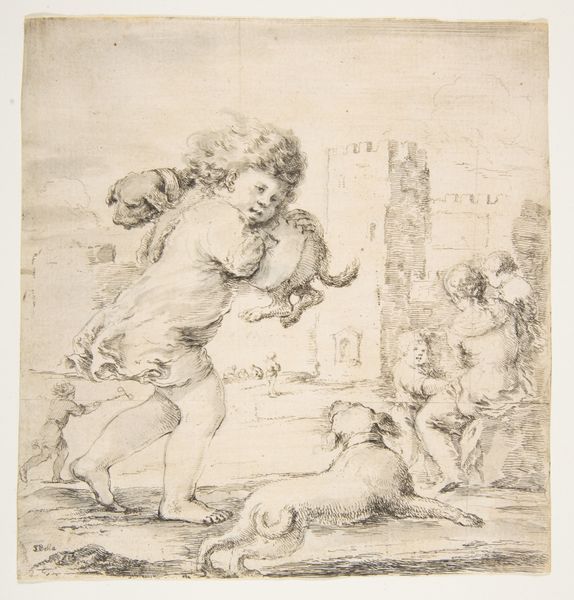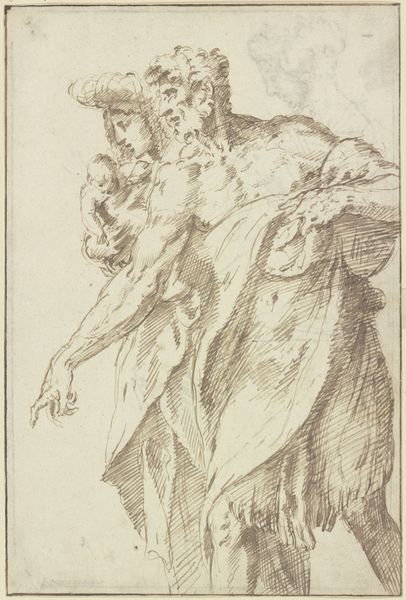
drawing, ink
#
drawing
#
narrative-art
#
baroque
#
pen sketch
#
figuration
#
ink
#
14_17th-century
#
history-painting
Copyright: Public Domain
Editor: This is Pietro da Cortona's drawing, "Abduction of the Sabine Women." It's rendered in ink, and there’s such dynamism! It makes me think about power, particularly male power, and how it manifests visually. What strikes you most when you look at this piece? Curator: That's a keen initial reading. I think the "abduction" narratives are revealing of their historical context, playing into anxieties and power dynamics that ripple across gender, race, and class lines. What's framed as historical or mythological can become a justification for contemporary injustices. Do you think Cortona’s composition romanticizes this violence? Editor: I hadn’t considered that directly, but seeing the struggle, the implied screams... the drama almost eclipses the horror, doesn't it? The energetic lines, typical of Baroque art, really heighten the sense of movement and spectacle, maybe even masking a darker truth. Curator: Exactly. Consider the setting, possibly ancient Rome, where the "need" for wives was used to justify violence against another community. It reveals an ideology of dominance, wouldn't you say? How might feminist theory, for instance, help us to deconstruct this imagery today? Editor: We could look at who has the power in the scene—men carrying women—and how that visually reinforces existing social structures. The women aren't given agency, they're objects being acted upon. Curator: Precisely. And what does it say about who gets to tell the story? Often, these historical depictions lack the perspective of the women being "abducted," framing them as property in a patriarchal narrative. It becomes a mirror reflecting our own values back at us. Editor: I never really thought of it that way. I was focusing more on the aesthetic impact, the drama of it all. I now realize how essential it is to consider the deeper socio-political implications of such a potent image. Curator: These dialogues between aesthetics and cultural understanding enrich our reading of the image itself. The more we investigate the artwork, the better we are able to look at and possibly transform our society today.
Comments
No comments
Be the first to comment and join the conversation on the ultimate creative platform.
